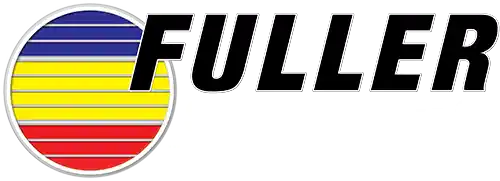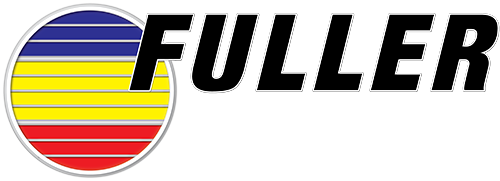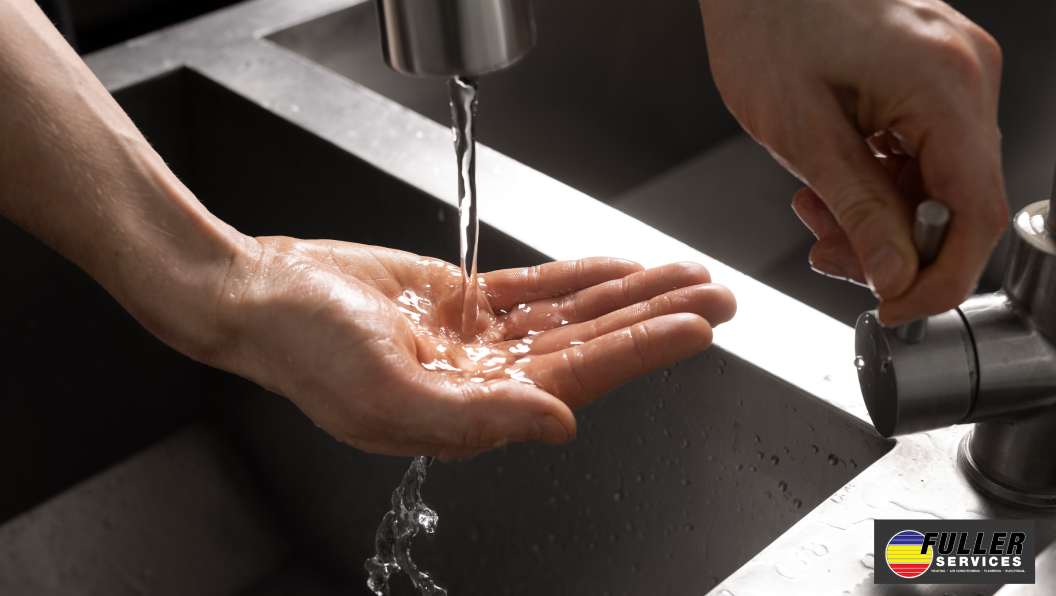
Hidden water leaks are silent saboteurs that can wreak havoc on your home and finances if left undetected. While some leaks announce themselves with obvious puddles or dripping faucets, the most dangerous ones often lurk behind walls, under floors, or within your plumbing system—quietly causing damage for weeks or even months. The average household wastes nearly 9,400 gallons of water annually from leaks alone, adding hundreds to your yearly utility bills while potentially causing thousands in structural damage.
Fortunately, your home will often provide subtle hints that something’s amiss before catastrophic damage occurs. If you’re wondering about the signs you have hidden water leak how to stop it, recognizing these early warnings is the first step. By learning to recognize these early warning signs, you can address hidden leaks promptly and prevent costly repairs.
Here are five telltale indicators that you might have a concealed water leak in your home—and what you can do about it.

1. Unexplained Increases in Your Water Bill
One of the earliest and most reliable indicators of a hidden leak is an unexpectedly high water bill. While seasonal fluctuations are normal (you might use more water during summer for gardening or filling pools), a sudden spike without explanation deserves investigation.
To determine if your bill increase signals a potential leak, start by tracking your water usage over several months to establish your household’s baseline. Then compare current bills to the same month from previous years to account for seasonal variations. Be especially alert for consistent upward trends that can’t be explained by changes in household habits.
A hidden leak can waste hundreds of gallons daily without any visible signs. Even a pinhole-sized leak in a pipe can waste nearly 400 gallons per day—enough to fill a swimming pool in a month while dramatically increasing your water bill.
2. Mysterious Sounds of Running Water
Your home should be relatively quiet when all water fixtures are turned off. If you hear the sound of running water when no taps are open and no appliances are operating, you might have a hidden leak requiring immediate attention.
The most revealing time to conduct this check is during the quietest hours of the night when household activity is minimal. Pay particular attention to the subtle hissing of water escaping from pressurized pipes, dripping sounds within walls or ceilings, and gurgling from drains when water isn’t being used.
These sounds are especially concerning if accompanied by other signs of water damage. The location of unusual water sounds can help narrow down where a leak might be occurring, giving professionals a head start on repairs when they arrive.
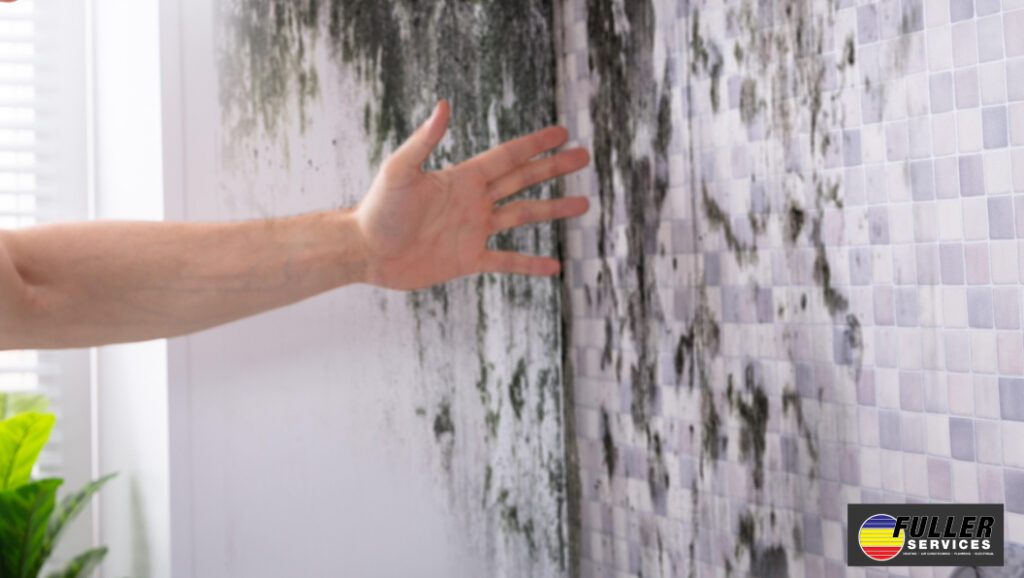
3. Musty Odors or Visible Mold Growth
Hidden moisture creates the perfect environment for mold and mildew growth, which often announces itself through distinctive musty odors before becoming visible. These odors typically intensify in enclosed spaces or areas where leaks are present.
Mold requires moisture to thrive, making it an excellent biological indicator of hidden water problems. Beyond the unpleasant smell, mold exposure can trigger respiratory issues, allergies, and other health concerns—particularly for children, the elderly, or those with compromised immune systems.
Areas most susceptible to mold growth from hidden leaks include several key locations throughout your home. Bathrooms are particularly vulnerable, especially around toilets or under sinks where plumbing connections might fail. Kitchens also present risk, particularly under sinks or behind appliances that use water. Don’t overlook basements where pipes may run through walls or ceilings, creating hidden moisture pockets. Finally, check attics regularly, as roof leaks might introduce moisture that’s not immediately visible from living spaces.
If you detect musty odors without a visible source or notice mold growing in areas that shouldn’t be wet, it’s crucial to investigate for hidden water sources promptly.
4. Unexplained Dampness or Water Stains
Visual evidence of water damage often appears as discoloration on walls, ceilings, or floors. These stains typically start subtle—perhaps a slight yellowing or darkening—before developing into more obvious water marks as the leak persists.
Water damage progression tends to follow a predictable pattern:
- Initial discoloration or slight texture change
- Warping or bubbling of materials like drywall or wood
- Sagging ceilings or buckling floors in advanced cases
- Structural weakening if left unaddressed for extended periods
Pay special attention to corners of rooms, areas around windows, beneath bathrooms, and along exterior walls where plumbing often runs. Water damage in these locations frequently indicates hidden pipe leaks rather than condensation issues.
An unexplained wet spot on your floor, damp carpet, or peeling paint deserves immediate investigation. Water follows the path of least resistance, so damage might appear far from the actual leak source as water travels along beams or pipes before collecting in visible areas.
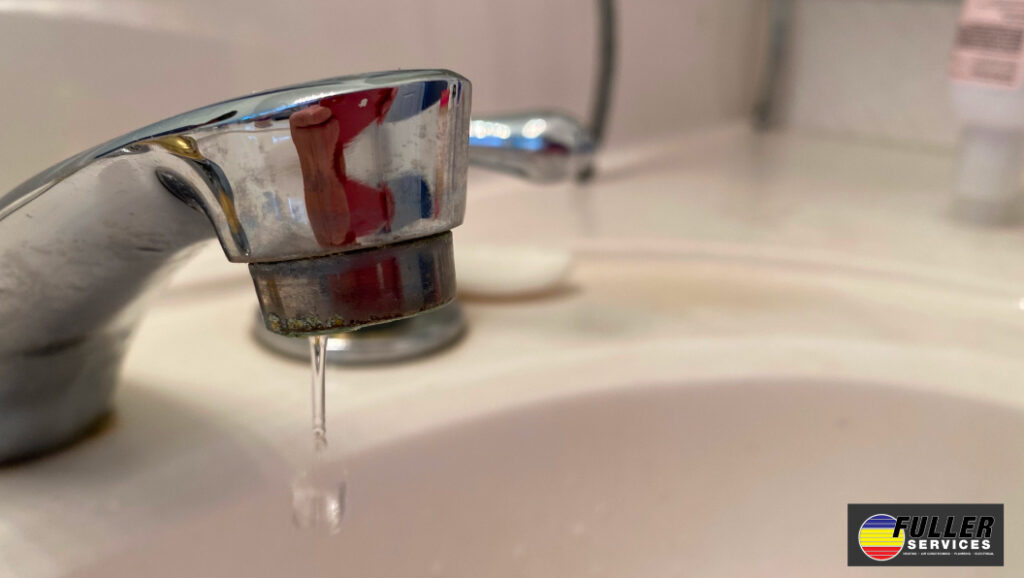
5. Declining Water Pressure
Water pressure issues throughout your home can indicate hidden leaks diverting water from your fixtures. While multiple fixtures running simultaneously naturally reduces pressure, a gradual decline in overall pressure often points to plumbing problems.
To check if decreasing pressure might be leak-related:
- Turn on a single faucet and note the water flow
- Compare this flow to what you experienced in recent months
- Test multiple fixtures to determine if the issue is isolated or system-wide
Water pressure changes may seem minor initially, but typically worsen as leaks expand. Pressure fluctuations can be particularly noticeable when using showers or filling bathtubs, where robust flow is more evident.
How to Stop Hidden Water Leaks
Discovering signs of a hidden leak requires prompt action to prevent extensive damage.
Here’s how to address potential leaks effectively:
Immediate Actions
- Check your water meter: Turn off all water sources in your home, then monitor your water meter for 30 minutes. If it moves despite no water being used, you likely have a leak.
- Shut off the water supply: If you suspect a significant leak, turn off your main water valve until a professional can assess the situation.
- Document the damage: Take photos of any visible signs of water damage for insurance purposes before beginning repairs.
Professional Detection Methods
When DIY efforts aren’t enough, professional plumbers and HVAC specialists have specialized equipment to pinpoint hidden leaks. Their arsenal typically includes acoustic leak detection technology that “listens” for leaks within walls, infrared cameras that detect temperature differences caused by water, moisture meters that can identify dampness within building materials, and video pipe inspection tools that examine the interior of plumbing systems.
Prevention Strategies
To minimize future hidden leak risks, consider implementing several preventative strategies.
- Schedule annual plumbing inspections to catch potential issues early, before they become costly problems.
- Regularly check visible pipes and connections for corrosion or damage that might indicate deeper issues.
- Monitor your water pressure, as excessive pressure can strain pipes and lead to failures over time.
- For comprehensive protection, consider installing water leak detection systems that alert you to unusual water flow patterns.
- Finally, maintain appropriate home humidity levels to more easily distinguish between normal condensation and actual leaks.
Don’t Let Hidden Leaks Drain Your Resources
Hidden water leaks rarely resolve themselves and almost always worsen over time. The five warning signs we’ve discussed—unexplained bill increases, mysterious water sounds, musty odors, water stains, and declining pressure—provide valuable early detection opportunities that can save thousands in potential damage.
If you recognize any of these signs in your home, don’t wait for visible water damage to confirm your suspicions. Our team of HVAC and plumbing professionals can conduct thorough leak detection services to identify and repair hidden water issues before they compromise your home’s structural integrity or your family’s health.
Contact us today to schedule a comprehensive leak detection inspection—because when it comes to hidden water leaks, what you can’t see can absolutely hurt you.
